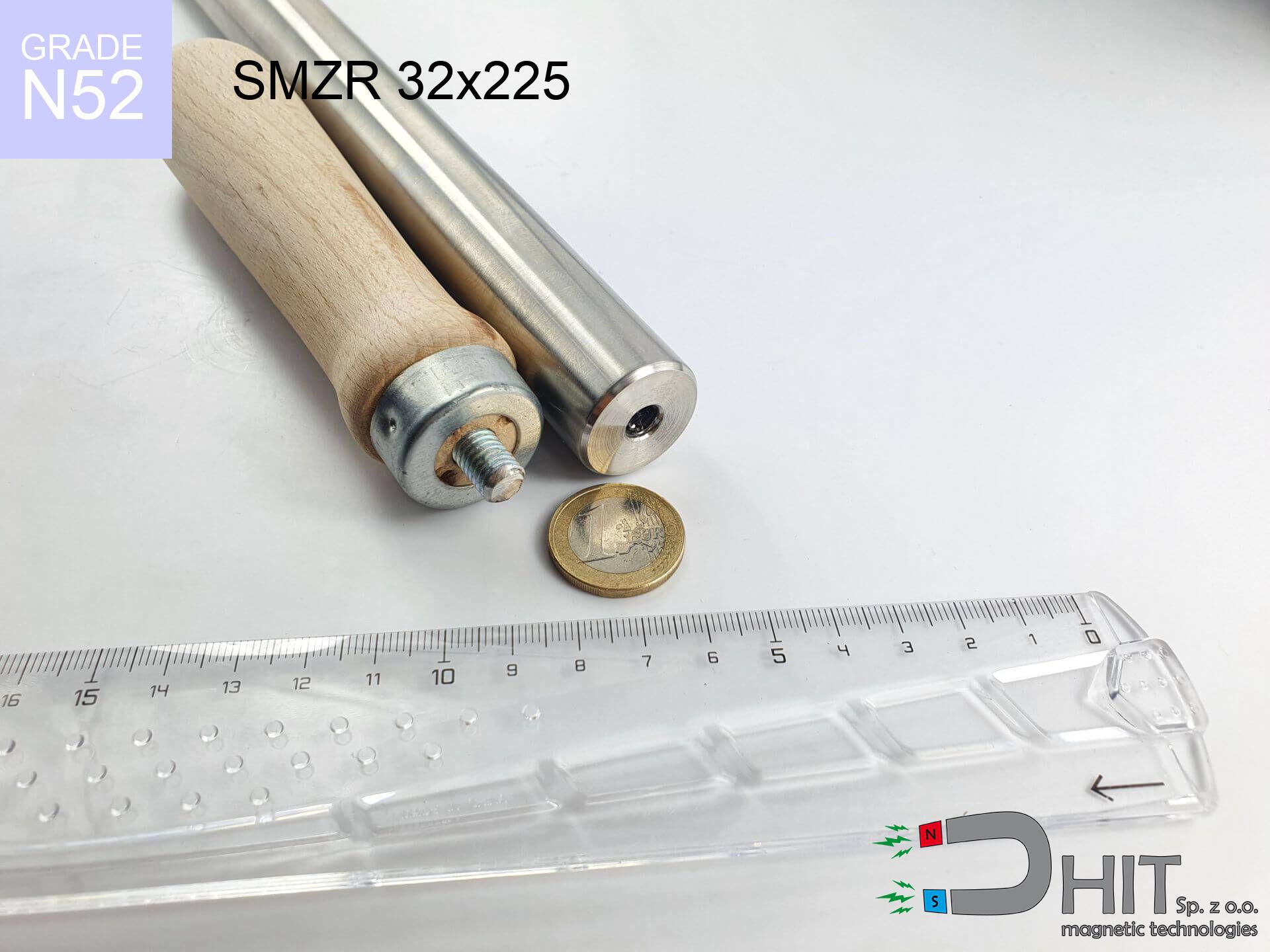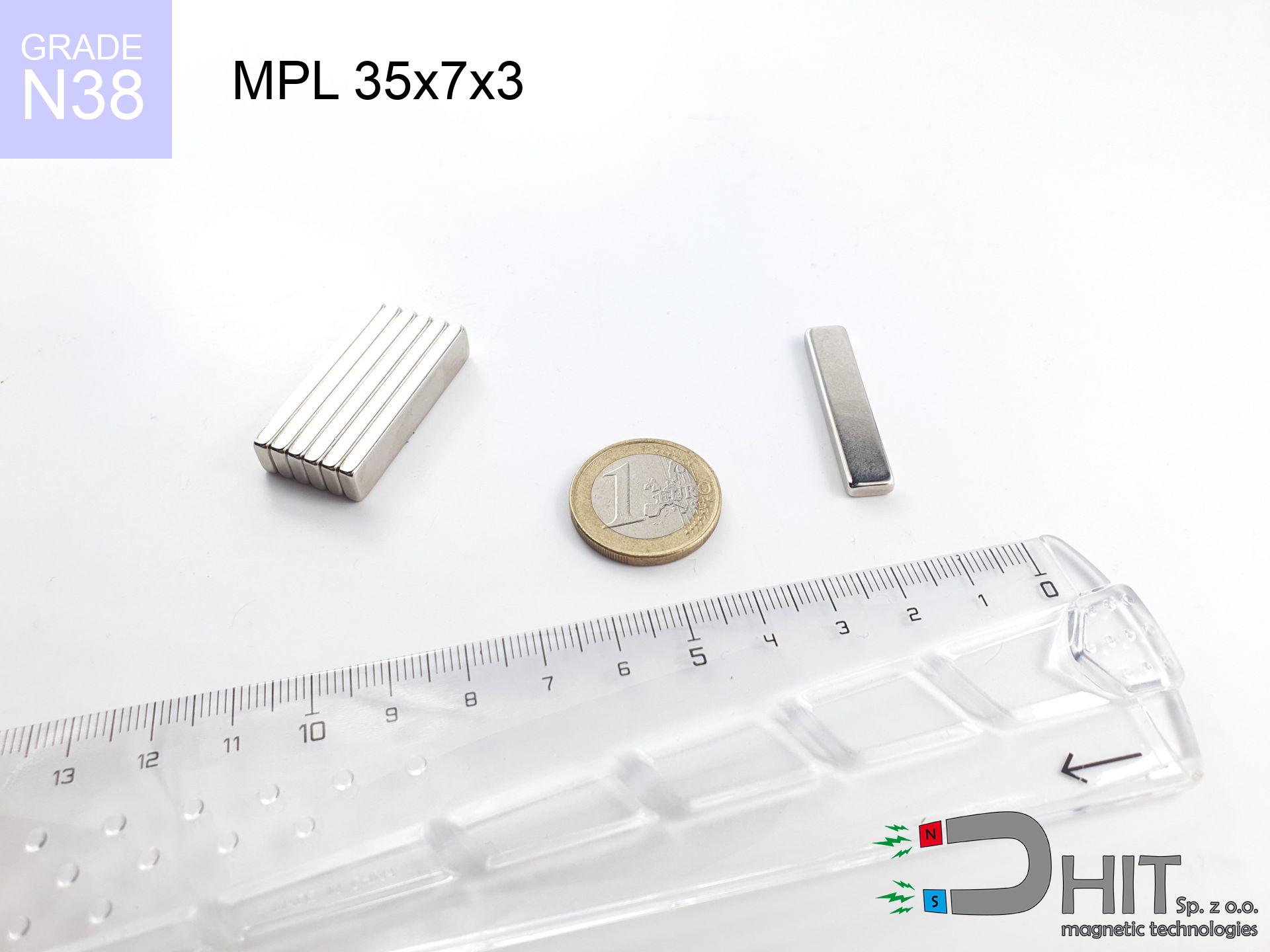NCM 30x13.5x5 / N38 - channel magnetic holder
channel magnetic holder
Catalog no 360488
GTIN/EAN: 5906301814870
Diameter Ø
30 mm [±1 mm]
Height
13.5 mm [±1 mm]
Weight
14 g
Magnetization Direction
↑ axial
Load capacity
16.00 kg / 156.91 N
Coating
[NiCuNi] Nickel
9.40 ZŁ with VAT / pcs + price for transport
7.64 ZŁ net + 23% VAT / pcs
bulk discounts:
Need more?
Pick up the phone and ask
+48 888 99 98 98
otherwise contact us using
contact form
the contact section.
Specifications along with shape of magnetic components can be tested with our
force calculator.
Same-day processing for orders placed before 14:00.
Technical - NCM 30x13.5x5 / N38 - channel magnetic holder
Specification / characteristics - NCM 30x13.5x5 / N38 - channel magnetic holder
| properties | values |
|---|---|
| Cat. no. | 360488 |
| GTIN/EAN | 5906301814870 |
| Production/Distribution | Dhit sp. z o.o. |
| Country of origin | Poland / China / Germany |
| Customs code | 85059029 |
| Diameter Ø | 30 mm [±1 mm] |
| Height | 13.5 mm [±1 mm] |
| Weight | 14 g |
| Magnetization Direction | ↑ axial |
| Load capacity ~ ? | 16.00 kg / 156.91 N |
| Coating | [NiCuNi] Nickel |
| Manufacturing Tolerance | ±1 mm |
Magnetic properties of material N38
| properties | values | units |
|---|---|---|
| remenance Br [min. - max.] ? | 12.2-12.6 | kGs |
| remenance Br [min. - max.] ? | 1220-1260 | mT |
| coercivity bHc ? | 10.8-11.5 | kOe |
| coercivity bHc ? | 860-915 | kA/m |
| actual internal force iHc | ≥ 12 | kOe |
| actual internal force iHc | ≥ 955 | kA/m |
| energy density [min. - max.] ? | 36-38 | BH max MGOe |
| energy density [min. - max.] ? | 287-303 | BH max KJ/m |
| max. temperature ? | ≤ 80 | °C |
Physical properties of sintered neodymium magnets Nd2Fe14B at 20°C
| properties | values | units |
|---|---|---|
| Vickers hardness | ≥550 | Hv |
| Density | ≥7.4 | g/cm3 |
| Curie Temperature TC | 312 - 380 | °C |
| Curie Temperature TF | 593 - 716 | °F |
| Specific resistance | 150 | μΩ⋅cm |
| Bending strength | 250 | MPa |
| Compressive strength | 1000~1100 | MPa |
| Thermal expansion parallel (∥) to orientation (M) | (3-4) x 10-6 | °C-1 |
| Thermal expansion perpendicular (⊥) to orientation (M) | -(1-3) x 10-6 | °C-1 |
| Young's modulus | 1.7 x 104 | kg/mm² |
Chemical composition
| iron (Fe) | 64% – 68% |
| neodymium (Nd) | 29% – 32% |
| boron (B) | 1.1% – 1.2% |
| dysprosium (Dy) | 0.5% – 2.0% |
| coating (Ni-Cu-Ni) | < 0.05% |
Environmental data
| recyclability (EoL) | 100% |
| recycled raw materials | ~10% (pre-cons) |
| carbon footprint | low / zredukowany |
| waste code (EWC) | 16 02 16 |
Check out more deals
Advantages and disadvantages of Nd2Fe14B magnets.
Benefits
- They have unchanged lifting capacity, and over around 10 years their performance decreases symbolically – ~1% (in testing),
- They do not lose their magnetic properties even under external field action,
- In other words, due to the smooth surface of nickel, the element gains a professional look,
- Magnets are characterized by excellent magnetic induction on the active area,
- Made from properly selected components, these magnets show impressive resistance to high heat, enabling them to function (depending on their shape) at temperatures up to 230°C and above...
- Considering the ability of precise molding and customization to individualized solutions, neodymium magnets can be produced in a variety of shapes and sizes, which increases their versatility,
- Huge importance in advanced technology sectors – they find application in magnetic memories, electric motors, diagnostic systems, and technologically advanced constructions.
- Relatively small size with high pulling force – neodymium magnets offer impressive pulling force in small dimensions, which enables their usage in miniature devices
Disadvantages
- They are prone to damage upon heavy impacts. To avoid cracks, it is worth securing magnets using a steel holder. Such protection not only shields the magnet but also increases its resistance to damage
- Neodymium magnets decrease their power under the influence of heating. As soon as 80°C is exceeded, many of them start losing their force. Therefore, we recommend our special magnets marked [AH], which maintain stability even at temperatures up to 230°C
- Due to the susceptibility of magnets to corrosion in a humid environment, we recommend using waterproof magnets made of rubber, plastic or other material stable to moisture, when using outdoors
- Limited possibility of making nuts in the magnet and complicated forms - preferred is casing - magnet mounting.
- Possible danger to health – tiny shards of magnets pose a threat, when accidentally swallowed, which is particularly important in the context of child health protection. Additionally, small elements of these products are able to complicate diagnosis medical when they are in the body.
- Due to neodymium price, their price exceeds standard values,
Lifting parameters
Maximum lifting force for a neodymium magnet – what affects it?
- on a plate made of structural steel, effectively closing the magnetic flux
- possessing a thickness of min. 10 mm to avoid saturation
- characterized by lack of roughness
- under conditions of gap-free contact (surface-to-surface)
- under vertical force vector (90-degree angle)
- at standard ambient temperature
What influences lifting capacity in practice
- Gap (betwixt the magnet and the metal), because even a very small clearance (e.g. 0.5 mm) can cause a drastic drop in force by up to 50% (this also applies to paint, rust or debris).
- Loading method – catalog parameter refers to detachment vertically. When slipping, the magnet holds significantly lower power (often approx. 20-30% of nominal force).
- Metal thickness – thin material does not allow full use of the magnet. Part of the magnetic field penetrates through instead of generating force.
- Metal type – not every steel attracts identically. High carbon content worsen the interaction with the magnet.
- Smoothness – full contact is possible only on polished steel. Any scratches and bumps reduce the real contact area, reducing force.
- Thermal factor – hot environment reduces pulling force. Exceeding the limit temperature can permanently demagnetize the magnet.
Holding force was tested on a smooth steel plate of 20 mm thickness, when the force acted perpendicularly, in contrast under parallel forces the holding force is lower. Additionally, even a small distance between the magnet and the plate reduces the holding force.
Safety rules for work with neodymium magnets
Swallowing risk
Absolutely store magnets out of reach of children. Choking hazard is high, and the consequences of magnets clamping inside the body are very dangerous.
Skin irritation risks
Nickel alert: The Ni-Cu-Ni coating contains nickel. If redness appears, cease handling magnets and wear gloves.
Power loss in heat
Standard neodymium magnets (N-type) undergo demagnetization when the temperature surpasses 80°C. This process is irreversible.
Fire risk
Combustion risk: Rare earth powder is explosive. Avoid machining magnets in home conditions as this may cause fire.
GPS and phone interference
Remember: rare earth magnets generate a field that disrupts sensitive sensors. Keep a safe distance from your mobile, device, and GPS.
ICD Warning
Individuals with a heart stimulator must keep an large gap from magnets. The magnetic field can disrupt the functioning of the implant.
Protective goggles
Neodymium magnets are ceramic materials, meaning they are fragile like glass. Impact of two magnets will cause them shattering into small pieces.
Handling guide
Before use, check safety instructions. Sudden snapping can break the magnet or injure your hand. Be predictive.
Hand protection
Pinching hazard: The attraction force is so immense that it can result in hematomas, crushing, and broken bones. Protective gloves are recommended.
Data carriers
Very strong magnetic fields can corrupt files on payment cards, hard drives, and other magnetic media. Stay away of min. 10 cm.



![SM 32x300 [2xM8] / N42 - magnetic separator SM 32x300 [2xM8] / N42 - magnetic separator](https://cdn3.dhit.pl/graphics/products/sm-32x300-2xm8-pel.jpg)




